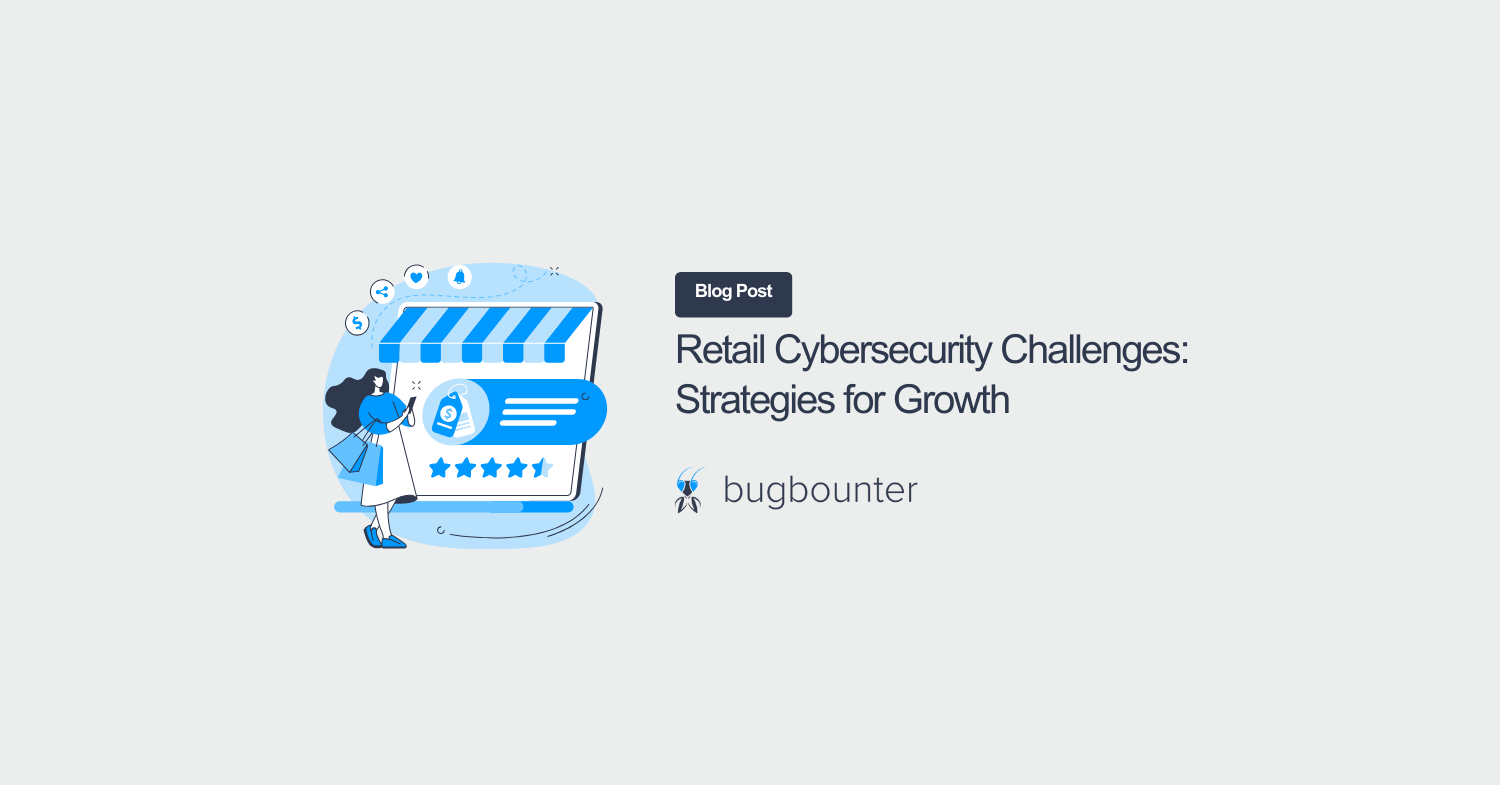Retail Cybersecurity Challenges: Strategies for Growth
The surge in online retail transactions, reaching $861.12 billion in 2020, has propelled the industry into a new era. While the shift offers immense opportunities, it also brings forth unprecedented retail cybersecurity challenges. In this article, we explore the cyber risks faced by online retailers, backed by recent statistics and delve into practical strategies to ensure sustained growth in this evolving landscape.
Don’t feel like reading today? Contact BugBounter for talking to a real person.
Understanding the Retail Cyber Threat Landscape
Online retailers, handling vast customer data, are prime targets for cybercriminals. In 2020, 24% of cyberattacks were directed at retailers, highlighting the severity of the issue (Trustwave). The financial motivation behind 99% of retail cyber attacks underscores the need for robust Retail Cybersecurity measures (Verizon 2020).
Why Retail Cybersecurity Challenges Happen
The proliferation of customer data, including Personally Identifiable Information (PII) and credit card numbers, creates a lucrative target for cybercriminals. Hybrid retail models, combining brick-and-mortar with e-commerce, introduce new threat vectors. Threats arise from cloud-based botnets, Near Field Communications (NFC) usage, software vulnerabilities, lack of point-to-point encryption (P2PE), and insecure third-party plugins.
Challenges to Look Out For
As e-commerce grows, automated threats, including bad bots, credential stuffing, and ransomware, pose significant challenges. The rise of the Internet of Things (IoT) in retail introduces new risks, with 2021 seeing retail as the 2nd most targeted industry for ransomware attacks (77% globally). Social engineering, web application attacks, and system intrusions remain top cyber threats.
Protecting Sensitive Data
The retail industry, experiencing 629 incidents in 2022, with 241 confirmed data breaches, must prioritize the protection of customer data (Verizon 2022). Strategies include data encryption, network segmentation, identity and access management, zero trust, and automation integration.
Learn more about protecting sensitive data.
Balancing Security with Operational Efficiency
Striking a balance between robust security measures and operational efficiency is crucial. Retailers should implement security solutions seamlessly integrated with existing operations, coupled with comprehensive employee training on security policies.
Types of Retail Cybersecurity Threats

Attacks on IoT, Payment Systems, and Machine Learning: Contactless transaction technologies using IoT introduce new cyber risks, with 2020 seeing 9 of the top 10 exploits targeting IoT devices.

Phishing Scams: Threat actors mimic legitimate sources through fake emails, aiming to steal information or install malware.

Ransomware: Exploiting vulnerabilities, attackers encrypt systems, halting transactions until a ransom is paid.

Data Breaches: Hackers sell customer information obtained through stolen credentials in underground markets.
Advanced Persistent Threats (APT) and Supply Chain Attacks
Retailers increasing their digital footprint and deploying complex IT stacks face prolonged APT persistence. Supply chain attacks highlight the interconnected vulnerabilities in the retail ecosystem.
Retail Cybersecurity Best Practices
Compliance with Key Regulations

PCI DSS: Governs payment card data processing, storage, and transmission, ensuring protection against theft and fraud.

GDPR: Strict rules on collecting and processing personal data, crucial for customer trust and global revenue protection.

CCPA: California state law granting consumers control over personal information, essential for protecting consumer data.

HIPAA: Federal law governing health information protection, crucial for retailers in health-related sectors.
Security Solutions

Encryption: Encrypt all sensitive data, especially credit card numbers, whether at rest or in transit.

Network Segmentation: Keep POS details, PII, and financial information safe through network segmentation.

POS Malware Protection: Implement anti-malware solutions on retail networks, particularly on POS systems.

Multi-Factor Authentication (MFA): Implement MFA to safeguard customer data from phishing attacks and account takeovers.

Zero-Trust Access (ZTA): Control user and device identity and access, adopting a “trust no one” philosophy.

Regular Data Backups: Minimize data loss potential by regularly backing up e-commerce website, POS systems, and applications.
BONUS: Security Training: Combat insider threats and compromised passwords by providing regular cybersecurity training to employees. Learn more about building a cybersecurity awareness culture at your company.
E-commerce Cybersecurity: Emerging Threats and Solutions
The e-commerce sector, vulnerable to cyberattacks, faces threats such as financial frauds, bots, DDoS attacks, and more. Implementing HTTPS, securing servers and admin panels, and deploying secure payment gateways are critical to mitigating these risks.
Bug Bounty Programs – A Collaborative Approach to Retail Cybersecurity
Integrating bug bounty programs can enhance retail cybersecurity. These programs encourage ethical hackers to identify and report vulnerabilities, providing retailers with an additional layer of defense against cyber threats.
Conclusion
The shift to e-commerce offers unprecedented opportunities for retailers but introduces new retail cybersecurity challenges. In this digitized post-COVID world, staying ahead requires heightened awareness of risks and proactive safeguard measures. As the online retail landscape evolves, retailers must adapt and fortify their cybersecurity strategies, embracing collaborative initiatives like bug bounty programs to ensure sustained growth and customer trust.
BugBounter offers a 24/7 available, flexible, and diverse crowdsource bug bounty platform for companies of all sizes. Contact us for learning more.





